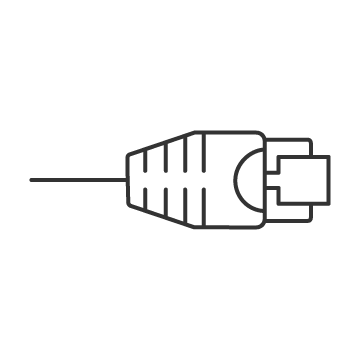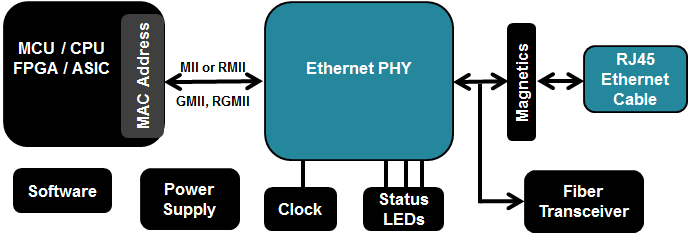SSZTCH5 july 2015 DP83825I , DP83848J , DP83869HM
The evolution of Ethernet is fascinating. More than 40 years ago, Robert Metcalfe was asked to create a local area network (LAN) for the storied Palo Alto Research Center. The result of Metcalfe’s innovative work would be standardized as Ethernet – an adaptive technology that would forever revolutionize the world of communications. Fast-forward to modern society, and Ethernet is everywhere.
| Real-world Ethernet training from TI's experts | |
|---|---|

|
Take your Ethernet training to the next level with the TI Precision Labs series for Ethernet PHYs, retimers and redrivers. |
What Is Ethernet?
Today, many people think that Ethernet means the Internet. While these two concepts are indeed related, Ethernet is simply an interface specification (IEEE 802.3) comprising many subsections and specifications defining the physical and data-link layers of the Open Systems Interconnection (OSI) model. One of the most important pieces that came out of IEEE 802.3 is the Ethernet physical layer (PHY).
Figure 1 shows an example block diagram of how data is transferred to and from an Ethernet node over standard Ethernet cable to a processor.
 Figure 1 Ethernet PHY System Block Diagram
Figure 1 Ethernet PHY System Block DiagramThese are the three things you should know about Ethernet PHY:
- It is a transceiver that is a bridge between the digital world – including processors, field-programmable gate arrays (FPGAs) and application-specific integrated circuits (ASICs) – and the analog world. An Ethernet PHY is designed to provide error-free transmission over a variety of media to reach distances that exceed 100 m.
- The Ethernet PHY is connected to a media access controller (MAC). The MAC is usually integrated into a processor, FPGA or ASIC and controls the data-link-layer portion of the OSI model. The media-independent interface (MII) defines the interface between the MAC and the PHY. Variations of the MII are available that provide minimal pin count and varied data rates depending on system requirements.
- Speed matters. There are many different variants of the Ethernet standard, with corresponding PHYs, that range from 1 Mbps to 100 Gbps. The majority of Ethernet applications use a 10/100-Mbps (DP83825I) or 10/100/1000-Mbps PHY (DP83869HM). The physical mediums that carry the data to the Ethernet PHY include twisted pairs, CAT5, coaxial cables, backplanes and fiber optics.
Without Ethernet, you would not be able to quickly send data from one point to another. Forty years after its creation, Ethernet has become truly indispensable. What else would you like to know about Ethernet PHY? Leave a comment below.
Additional Resources
- Learn how to find the right Ethernet PHY for your application with the technical article, SimpliPHY your Ethernet design, part 1: Ethernet PHY basics and selection process.
- Streamline development with TI’s Gigabit PHY evaluation module.
- Check out this electromagnetic interference (EMI)/electromagnetic compatibility (EMC)-compliant industrial temp dual-port Gigabit Ethernet TI Design reference design.